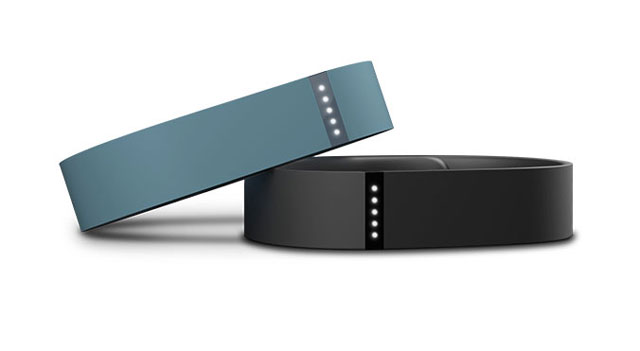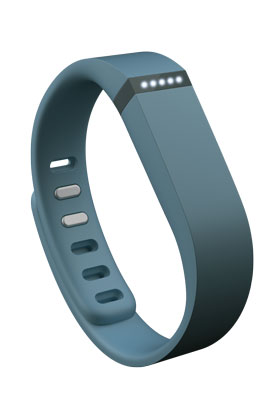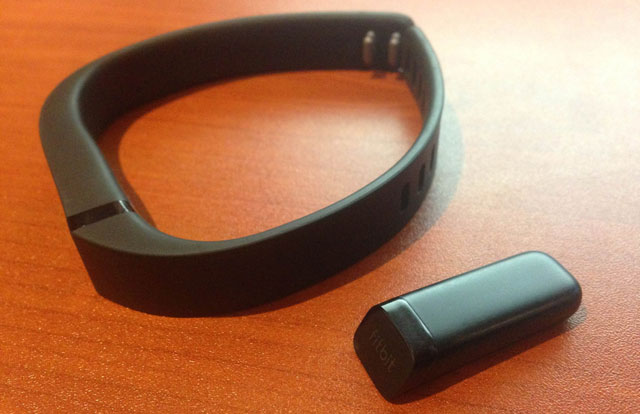
Would you do more exercise if you could tell how much you’d already done on any given day and had set a goal you hadn’t yet reached? With its range of personal activity monitors, US-based Fitbit’s banking on the answer being “yes”.
Of course, so, too, are Nike, Jawbone, Samsung and numerous others that have sought to capitalise on the growing personal fitness monitoring trend that is currently very much in an upswing.
So, why consider the Fitbit Flex over rival products? Firstly, at R1 299, it’s cheaper than most other wristband fitness trackers. Secondly, it tracks things using standard units of measurement.
Sure, Nike’s FuelBand may be more visually arresting (Jawbone’s Up scores even higher on that front), but using an esoteric an un-quantifiable measure of the company’s own choosing — NikeFuel — is far less informative than the steps, distance and calories the Fitbit records.
 There’s a third reason we really like the Fitbit Flex: it’s the most innocuous-looking of the lot. The device itself is a small, black, plastic unit that measures about 25mm x 7mm x 5mm. The bottom of the unit has a charging port, while the top houses five white LEDs that are used to indicate how close you are to your daily goal or which mode the device is in. In turn, this unit fits into a plain rubber wristband — available in various colours — that includes a translucent, tinted window so that the LEDs can be seen.
There’s a third reason we really like the Fitbit Flex: it’s the most innocuous-looking of the lot. The device itself is a small, black, plastic unit that measures about 25mm x 7mm x 5mm. The bottom of the unit has a charging port, while the top houses five white LEDs that are used to indicate how close you are to your daily goal or which mode the device is in. In turn, this unit fits into a plain rubber wristband — available in various colours — that includes a translucent, tinted window so that the LEDs can be seen.
Tapping the device twice illuminates between one and five of the LEDs depending on how many steps you’ve taken in a day. Each LED represents 20% of the daily goal, which is set to 10 000 steps by default.
Tapping the wristband beneath the window repeatedly illuminates the first and fifth lights and puts the Flex into sleep mode, which then tracks how much you toss and turn in bed and uses this information to give an indication of the quality of your sleep.
The Flex is charged using a special holder that plugs into a USB port and the unit takes about three hours to charge. The battery lasts between five and six days on a single charge, which is great given it’s the sort of thing you want to wear as much as possible. With this in mind, it’s also waterproof and you can wear it in the shower.
Users have two options for viewing the data that the Flex collects. The first is by using a desktop client that pulls data from the unit via a tiny USB dongle. The second is by using the Fitbit mobile app, which connects to the device using Bluetooth. We found the app far more convenient, particularly as it can be set to initiate a Bluetooth connection only when you open it. It also means you can check your progress at any time with relative ease.
Though there are apps for Android and iOS devices, it will only work with the iPhone 4S and 5, the fifth-generation iPod touch, the third-generation iPad and later, the iPad mini, the Samsung Galaxy S3 and S4, the Note 2 and the Note 10.1. Support for more devices is planned.

Perhaps our favourite feature of the Flex is its “silent alarm”. Using the desktop interface or the mobile app, you can set a once-off or recurring alarm that will make the Flex vibrate. The idea is that an alarm vibrating on your wrist will wake you without disturbing your partner.
The Flex’s core metrics are steps, distance and calories burned, but those feeling even more diligent can log their water intake, their meals, other activities like visits to the gym, and changes to their weight. We’re not that diligent, but still found the default metric and the sleep summary illuminating.
The real question is, did the Fitbit Flex alter your reviewer’s behaviour? On the first full day of use, he took out the rubbish, which he admits he probably wouldn’t have done if he hadn’t been 500 steps short of the daily 10 000-step target. On day two, he ran an extra loop around the block for the same reason.
Perhaps the real question is this: will the Flex still be altering people’s behaviour in a year’s time, once the novelty has worn off? That’s more difficult to answer with only a week of use. However, there’s no doubt the Flex makes people more aware of their behaviour, and that’s the first step to changing it. — (c) 2013 NewsCentral Media

